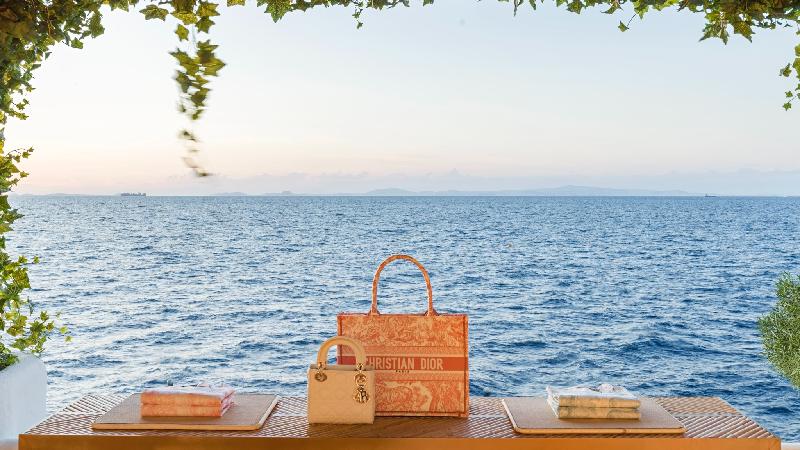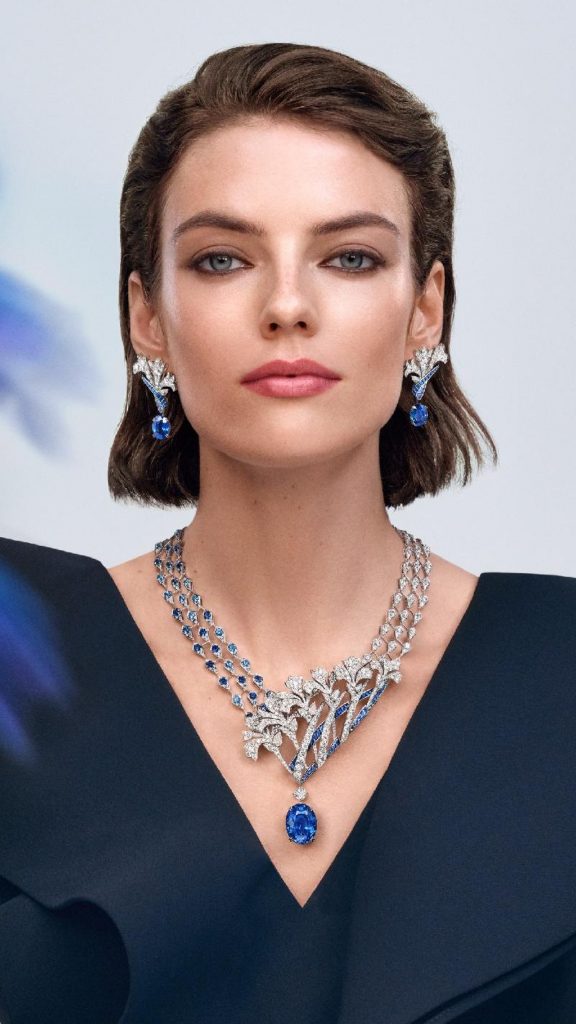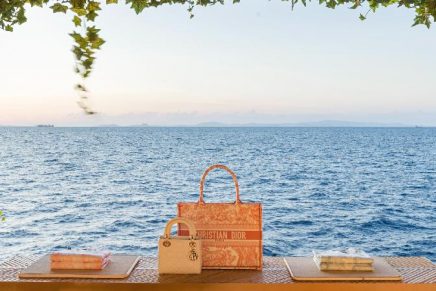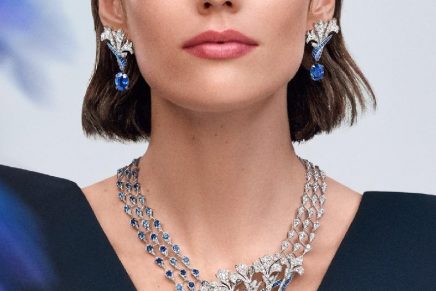Paris in the heart of summer is a city of gilded whispers. The air, heavy with the scent of linden trees and the echo of couture shows, holds secrets of a new era. This past month, from the quiet corridors of the Hôtel particulier to the bustling ateliers, the narrative of French luxury has been one of profound transition. It is a story not of decline, but of a great market correction, where the future has been forged in a delicate balance of public spectacle and private introspection. On the grand stage of haute couture, creative directors bid emotional farewells and new voices emerged with a newfound respect for tradition. In the quiet offices of the finance houses, diverging philosophies of luxury were laid bare, separating the enduring from the ephemeral. As new architectural foundations are laid across the city, Paris itself proves it is not merely a setting for this drama, but a central character—a permanent anchor in a sea of change.
This report will explore these threads, connecting the seemingly disparate moments of the last month to unveil the deeper, transformative currents shaping the global luxury landscape.
The New Guard: A Parisian Stage of Farewells and First Steps
Paris Haute Couture Week, running from July 7 to July 10, served as the definitive event of the season, transforming the city into a theater of creative shifts. It was a time of momentous change, marked by the powerful closing acts of established visionaries and the highly anticipated debuts of new ones.
The Architects of Change
This season was defined by a series of significant handovers, each revealing a different approach to navigating the industry’s complex relationship with heritage and modernity. Demna’s Final Act: The Couture of a Legacy The most emotionally charged moment of the week was Demna’s farewell with his Balenciaga Couture 54 collection on July 9. After a decade of creative leadership that was as polarizing as it was celebrated, this collection was an intensely personal final statement. Instead of chasing disruption, Demna returned to the foundational ethos of the house’s founder, Cristóbal Balenciaga, grounded in a “relentless pursuit of impossible perfection”. The garments were architectural, sculpted yet fluid, and imbued with a new sense of refined minimalism and comfort.
The power of this farewell lay in its quiet, deeply human details. The soundtrack was a compilation of recordings from his atelier team, each member saying their name—a touching tribute to the artisans who brought his vision to life. The collection was a personal scrapbook, weaving in references to his grandmother and muses like Elizabeth Taylor, while also featuring flowers crafted from discarded materials and his signature couture sneakers. By ending his tenure with a collection rooted in heritage, emotion, and craftsmanship, Demna made his most profound statement yet, proving that true artistry and a brand’s legacy can rise above controversy. It was a powerful declaration that the soul of couture ultimately resides in the
atelier, not in the spectacle.
Celine’s Homecoming: A New Vocabulary of Menswear
Just before the official start of couture week on July 6, Michael Rider’s much-anticipated debut for Celine marked a significant new chapter. This was more than a new collection; it was a homecoming. Having previously served as design director under Phoebe Philo for a decade, Rider’s return was seen as a pivot toward the house’s roots of wearability and timelessness.
Rider’s collection offered a confident new vocabulary for menswear, blending “severity with softness, tradition with bold punctuation”. Standout looks included a camel trench that swept the floor, razor-sharp oversized blazers, and a black double-breasted coat paired with vibrant geometric tights in cobalt and cherry. This aesthetic, built on impeccable tailoring and fluid lines, was a deliberate move away from the “It Girl” and logo-centric style of the previous era. The collection’s focus on enduring style over transient trends is a strategic positioning for a more mature, classic, and commercially viable luxury consumer. It demonstrates how a brand’s creative direction can be an immediate and precise reflection of changing market demands.
The Quiet Passage at Chanel: A Poetic Ode to Legacy
The Fall-Winter 2025/26 Haute Couture collection for Chanel was a momentous occasion, as it was the final one created by the in-house studio before Matthieu Blazy assumes the role of creative director. Presented in a serene setting at the Grand Palais, the collection was a pastoral celebration of nature, inspired by the romantic landscapes of the English countryside and Scottish moors.
The collection’s palette was a tranquil echo of a misty rural morning, featuring ecru, ivory, brown, forest green, and soft black. Fabrics were given center stage, with richly textured tweeds and feathers creating illusions of faux fur and blurring the lines between structure and softness.
The silhouettes, borrowing from menswear to honor Gabrielle Chanel’s vision of liberation, were boxy and oversized yet fluid in movement. Throughout, the collection was punctuated by a symbolic motif: the wheat ear, which was cherished by the maison’s founder as a sign of abundance, appearing as jeweled buttons and intricate embroidery. This collection was more than a stopgap; it was a profound act of institutional memory and a moment of quiet reverence, celebrating the enduring power of a brand’s DNA to transcend individual creative leadership.
Dior’s Pause for Reflection: A Silence Before the Storm A notable absence from the Paris Haute Couture calendar was Christian Dior. This pause, following Maria Grazia Chiuri’s departure in May after nine years at the helm, was a significant event in itself. While her final collection was a Resort 2026 show, her exit left a notable void in the couture schedule.
This lack of a collection for the season serves as a powerful reminder of the high-stakes “designer musical chairs” that characterize the industry and the inherent instability that comes with creative transitions. The silence sets the stage for the collective anticipation of Jonathan Anderson’s eventual debut, who is widely expected to take over womenswear in addition to his current role as artistic director of Dior men’s.
Ephemeral Beauty, Enduring Art
The creative narratives of haute couture extended beyond the garments themselves, finding expression in the season’s definitive beauty trends. These looks were not merely aesthetic choices but an amplification of each house’s artistic philosophy.
● Chanel’s Messy Bun: In a subtle counterpoint to the maison’s highly constructed garments, models at Chanel wore low, undone buns. With soft strands escaping, the look married effortless modernity with timeless sophistication, embodying a sense of quietrefinement and relaxed fluidity that perfectly complemented the collection’s pastoral theme.
● Schiaparelli’s Vinyl Black Lips: At Schiaparelli, creative director Daniel Roseberry’s surrealist aesthetic was heightened by a bold beauty statement. Models’ lips were coatedbin high-gloss black lipstick, with precisely defined contours and lacquered centers. This dramatic and luxurious finish allowed the lips to command full attention, creating a theatrical effect that was perfectly aligned with the house’s avant-garde vision. This was epitomized by Cardi B, who appeared in a sleek velvet gown with a live raven on her arm, transforming her look into a piece of performance art.
● Iris van Herpen’s Iridescent Brows: Iris van Herpen’s show pushed the boundaries of beauty into the bio-futuristic realm. Brows were coated in opalescent pigments that shimmered in coral, lavender, and silver hues, evoking something ethereal and alien. This focus on luminous skin and mythological auras demonstrated how makeup can be a central element of a larger, intensely sensory narrative.
The Great Correction: A Tale of Two Luxuries
Beyond the runways, the luxury industry is grappling with a significant economic shift. The “post-pandemic high” has subsided, leading to a market correction that is separating the “truly desirable from the merely recognisable”. This trend is not a collapse, but a divergence, creating a tale of two luxuries with starkly different outcomes for major players.
The Tale of Two Luxuries
The performance of luxury houses is now highly polarized, with some experiencing significant growth while others face a challenging new reality.
The Winners’ Circle: A Philosophy of Scarcity Brands built for the top of the luxury pyramid—those with a philosophy rooted in rarity and craftsmanship—are thriving. Hermès, for instance, continues to set the benchmark in a tumultuous market. Analysts expect its core leather goods division to have grown by a robust 12% in Q2 2025, a testament to its strategy of “scarcity, craftsmanship, and product consistency”.
This approach, which maintains a tightly controlled supply and avoids the pitfalls of overexposure, cultivates a base of high-net-worth clients who are insulated from economic pressures. The company reported an industry-leading operating margin of 41.4% for the first half of 2025, further underscoring its financial resilience.
The Aspirational Challenge: When Scale Becomes a Liability In stark contrast, conglomerates that chased volume and relied on aspirational customers are struggling. LVMH’s flagship Fashion & Leather Goods division, which includes powerhouses like Louis Vuitton and Dior, experienced a 12% year-on-year revenue decline in Q2 2025—the steepest drop since the 2008 financial crisis. Similarly, Kering’s Gucci continues to struggle, seeking a new identity and relevance amid “weakening demand from under-35s” and a carousel of creative directors.
This struggle is not due to a halt in spending by the ultra-rich, who continue to support brands like Hermès and Cartier. Instead, the decline stems from the “vanishing middle”—the young professionals and entry-luxury shoppers who are reconsidering premium purchases in the face of cost-of-living pressures and economic uncertainty. This market correction is a powerful signal: a return to the true foundations of luxury is underway, separating the truly desirable from the merely recognizable.
The Battle for the Senses: A Beauty Market Shakeup
The beauty and fragrance sector is now a critical battleground, and its dynamics perfectly illustrate the competing strategies of the industry’s giants.
The Hermès Paradox: A First Setback While its core leather goods segment remains unassailable, Hermès’s fragrance and beauty division experienced a rare contraction of 4% in H1 2025—its first sales decline since its launch in 2020. The company attributed this to a “high base effect” from last year’s blockbuster fragrance launches and a lack of equally impactful debuts this year. This setback raises a crucial question: can Hermès’s discreet, craftsmanship-driven strategy, which is so effective for its core business, compete in a hyper-competitive beauty market that increasingly values celebrity influence and hyper-visible campaigns?
The New Olfactory Empire: LVMH and Kering’s Aggressive Moves In sharp contrast to Hermès’s quiet performance, LVMH and Kering are making aggressive moves to dominate the beauty sector. LVMH, for example, launched Louis Vuitton Beauté in collaboration with “makeup icon” Dame Pat McGrath, debuting over 70 SKUs this month. This is not just a product launch but a strategic maneuver to broaden the house’s vision and capture a booming market.
Meanwhile, Kering Beauté, driven by the success of its Creed women’s fragrance line, defied sector-wide pressures to grow revenue by an impressive 9% in H1 2025. This aggressive expansion by rivals highlights the divergent paths of the industry’s giants and shows that the pursuit of scale remains a powerful, if perilous, strategy in specific market segments.
The Alchemist’s Atelier: High Jewelry and Watches
During Paris Haute Couture Week, the most captivating launches were not garments, but jewels. In a market correcting toward substance, high jewelry and watches are emerging as the ultimate arbiters of enduring
craftsmanship and profound storytelling. These collections were less about conspicuous consumption and more about wearable art that connects to a rich narrative.
A Painter’s Vision in Jewels
High jewelry collections unveiled in Paris this season were miniature worlds of wonder, each with a unique narrative.
● Chaumet’s ‘Wild Rose’ Necklace: A masterclass in botanical intricacy, this necklace, from the 2025 ‘Jewels by Nature’ collection, echoes the spirit of a 1922 tiara. The transformable piece, requiring “nearly 1,500 hours of craftsmanship,” centers on an8.23-carat Fancy Vivid Yellow diamond, framed by brilliant-cut diamonds. Its romantic yet precise design is a tribute to nature’s enduring power.
● Dior’s ‘Diorexquis’ Brooch: Victoire de Castellane’s artistry shines in this brooch, a “miniature world of wonder” that transforms high jewelry into storytelling. The piece features a pink enamelled fawn nestled among sculpted flowers, turquoise berries, and pearl-laden trees, all set against a mother-of-pearl backdrop. It is a whimsical forest tableau that captures the spirit of an enchanted garden.
● Mellerio’s ‘Jardin des Rêves’ Necklace: This necklace draws on French heritage, inspired by a royal tapestry once owned by Marie-Antoinette. It reimagines the historic motif of the pineapple through a “painterly array” of vibrant tourmalines, sapphires, and morganites. The piece’s transformable nature, with a diamond-topped pineapple pendant that detaches into earrings, makes it a joyful, opulent, and deeply historical creation.
Moments in Time
The world of horology also offered noteworthy launches that grounded technical excellence in powerful narratives. Baume & Mercier’s new Riviera collection, for example, draws direct inspiration from the French Riviera, with its distinctive 12-sided case referencing the sculptural landscape of the Côte d’Azur. This connection between a timepiece and a place reinforces the emotional resonance of luxury. Similarly, Montblanc’s limited-edition 1858 Geosphere 0 Oxygen Mount Vinson watch is a touching tribute to Reinhold Messner’s record-breaking 1986 ascent.
By linking the timepiece to a story of human achievement and exploration, the brand elevates a
technical object into a meaningful heirloom.
The City’s New Foundations: A Guide to Paris Transformed
Paris is not simply the stage for luxury; it is actively reinforcing its status as the world’s luxury capital through a series of thoughtful physical investments. New cultural institutions and flagship openings are not random events, but calculated reinforcements of the city’s identity.
A prime example is the opening of Jacques Marie Mage’s first French flagship in the historic 2nd arrondissement. This move by a Los Angeles-based eyewear designer to anchor itself in Paris speaks volumes about the city’s symbolic power. On a grander scale, the city’s cultural bedrock is also being reimagined. The Fondation Cartier is set to relocate to the former Louvre des Antiquaires, a move that will provide 6,000 square meters of exhibition space and firmly anchor it as a major cultural force. The highly anticipated reopening of the Palais de la Découverte, a Parisian landmark dedicated to the popularization of science, is also on the horizon, further cementing the city’s status as a hub for both art and intellect. These new foundations demonstrate a long-term strategic vision that transcends quarterly earnings and creative director changes, making Paris’s influence a matter of concrete, physical reality.
The Soul of a Maison
The last month in the world of French luxury has been one of great change, but it is not a storyof a sunset. Rather, it is the story of an industry in the midst of a necessary and healthy correction. The whispers heard across Paris are not of a looming collapse, but of a renewed clarity. The market is choosing authenticity over artifice, preferring the quiet power of a house that stands by its values over the fleeting drama of a celebrity-fueled trend. The success of brands rooted in scarcity and craftsmanship, the emotional farewells of designers seeking to leave a legacy, and the reimagining of the city’s cultural and physical landscape all point to the same conclusion.
The future of luxury will not be defined by who shouts the loudest, but by who speaks with the most integrity. It will be defined by the enduring power of a maison’s soul—a commitment to uncompromising beauty, profound storytelling, and the timeless art of the human hand. This is not the end of a chapter, but a touching beginning, with a new generation of connoisseurs ready to feel the difference.





